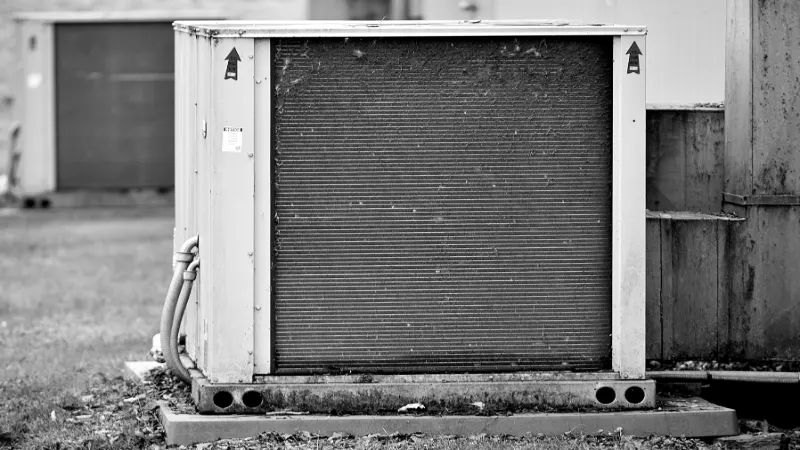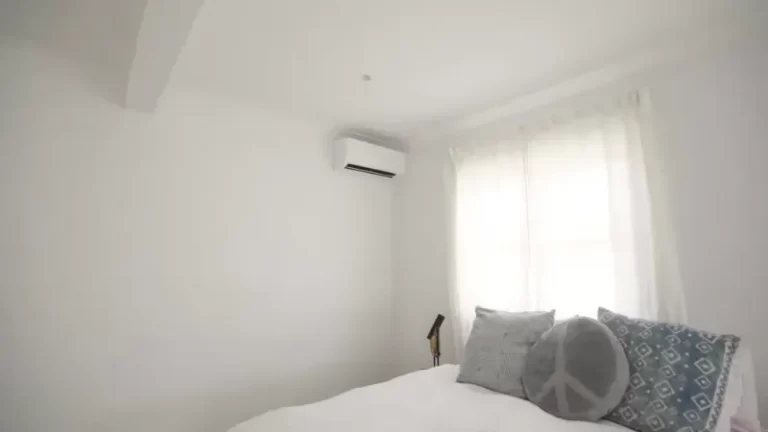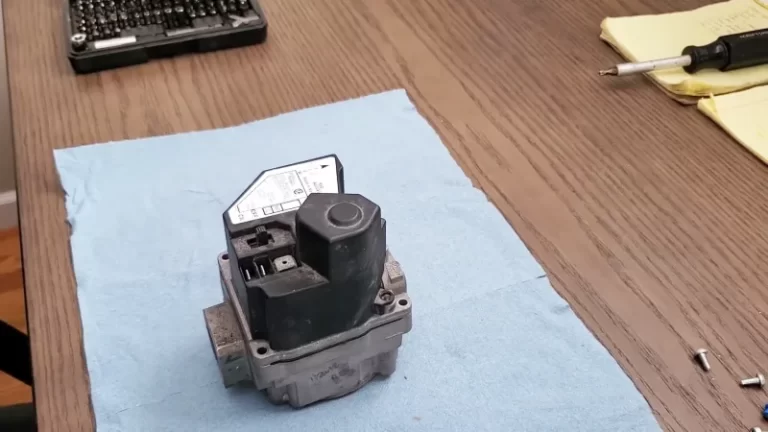AC Filter Stuck & Won’t Budge? Your 5-Minute Rescue Guide
There are few home maintenance tasks as seemingly simple as changing an air conditioner filter. It’s a five-minute job that keeps your air clean and your system running efficiently. But when you slide open the access panel and give the old filter a tug, nothing happens. It’s completely, utterly stuck. This minor inconvenience can quickly turn into a major frustration, leaving you worried about damaging your expensive HVAC system.
Don’t panic. A stuck AC filter is a common problem with a handful of logical causes and straightforward solutions. This guide will walk you through why your filter is jammed, how to safely remove it without causing damage, and what you can do to ensure this problem never happens again. A little patience and the right technique are all you need to win this battle.
You'll Learn About
Decoding the Mystery: Why AC Filters Get Stuck
Before you can solve the problem, you need to understand its root cause. An air conditioner filter can get stuck for several reasons, often related to neglect, environmental factors, or simple human error. Identifying the likely culprit will make the removal process much smoother and safer for your system.
Common Culprit #1: Extreme Dirt and Debris Buildup
The most frequent cause of a stuck filter is also the most preventable: letting it get too dirty. Your filter’s job is to trap dust, pollen, pet dander, and other airborne particles. Over time, this buildup becomes so thick that it restricts airflow, causing the system’s blower to pull with immense force. This powerful suction can deform a flimsy filter, pulling it deeper into the unit and wedging it tightly against the housing.
A severely clogged filter doesn’t just get stuck; it effectively suffocates your air conditioner. This strain can lead to reduced cooling performance, higher energy bills, and even costly damage to the blower motor. Regularly replacing your filter is the single most important task for maintaining your HVAC system’s health.
Common Culprit #2: The Swelling Effect of Humidity
Many standard disposable filters are constructed with cardboard frames. While cost-effective, these frames have a significant weakness: moisture. In humid climates or during damp seasons, the cardboard can absorb moisture from the air, causing it to swell, soften, and lose its structural integrity. This swelling can make the filter too large for its designated slot, creating a tight jam that is difficult to overcome.
This issue can be exacerbated if your AC’s condensate drain line is clogged, leading to excess moisture within the air handler. It’s a reminder that issues in one part of a system can have unexpected consequences elsewhere, much like how a faulty washing machine check valve can lead to drainage problems in your laundry room. If you live in a humid area, consider using filters with plastic frames that are impervious to moisture.
Common Culprit #3: The Wrong Size or a Botched Installation
It might sound obvious, but using the wrong size filter is a guaranteed recipe for trouble. A filter that is even a fraction of an inch too large will have to be forced into the slot, making it nearly impossible to remove later. Conversely, a filter that’s too small can be sucked into the ductwork, creating a much more serious problem.
Improper installation can also be to blame. If the filter is inserted at an angle or not seated correctly in its track, it can easily become wedged. Always check the dimensions printed on your old filter or in your HVAC manual and ensure the new filter slides in smoothly and sits flush.
Common Culprit #4: A Damaged Filter Frame
The frame of the filter, whether cardboard or plastic, can be surprisingly fragile. If it was bent or damaged during the initial installation, those compromised points can snag on the inside of the filter housing. Attempting to forcefully pull it out can worsen the damage, causing the frame to collapse and jam itself even more securely.
This is why a gentle, steady approach to removal is always recommended first. Yanking impatiently on a stuck filter is the fastest way to break the frame and turn a simple problem into a complex one that requires disassembling the filter piece by piece.
The Ultimate Guide to Removing a Stuck Air Conditioner Filter
Now that you have a better idea of why your filter is stuck, it’s time to get it out. The key is to work patiently and methodically. With the right tools and techniques, you can safely liberate the jammed filter and get your system back in working order.
First and Foremost: Safety Precautions
Before you attempt any of these steps, you must prioritize your safety. Always turn off the power to your HVAC system at two locations: the thermostat and the circuit breaker. This eliminates any risk of the system unexpectedly turning on while you are working, which could cause injury or damage the unit. It’s also wise to wear gloves to protect your hands from sharp edges and accumulated grime.
Step 1: The Gentle Approach (Wiggle and Pull)
Your first attempt should always be the least aggressive. Try to get a firm grip on whatever part of the filter is accessible. Gently wiggle it from side to side and up and down while pulling steadily towards you. Sometimes, this gentle persuasion is all it takes to dislodge a filter that is only slightly caught on an edge.
Do not apply brute force. If the filter doesn’t budge with a firm, steady pull, move on to the next step. Forceful yanking will likely damage the filter frame and make the situation worse.
Step 2: Bring in the Tools (Pliers and a Flashlight)
If a gentle pull fails, it’s time to get a better grip. A pair of needle-nose or standard pliers can be invaluable. Use a flashlight to peer into the filter slot and identify exactly where it’s catching. Grab the edge of the filter frame with the pliers, ensuring you have a solid hold.
Once again, pull straight out with steady, even pressure. Avoid twisting or pulling at an angle, as this can cause the frame to buckle. If the visible edge of the frame starts to tear or disintegrate, you may need to try a different tactic.

Step 3: The Hook Method for Recessed Filters
Sometimes, the outer edge of the filter is damaged or pushed in too far to grab with pliers. In this scenario, a simple hook can be your best friend. You can easily fashion one by bending a sturdy piece of wire, like a metal coat hanger, into an L-shape with pliers. A paint can opener also works perfectly for this job.
Slide the hook into the slot alongside the filter until it gets past the filter’s edge. Turn the hook 90 degrees so it catches the back of the filter frame. Now, you can pull towards yourself, applying pressure from deeper within the housing. This often provides the leverage needed to free a truly stubborn filter.
Step 4: The Last Resort (Strategic Destruction)
If all else fails and the filter is hopelessly jammed, your final option is to remove it in pieces. This should only be done as a last resort. The goal is to carefully cut and collapse the filter media to relieve the pressure holding it in place. Using a utility knife and pliers, carefully cut away the pleated filter material from the frame.
Once you’ve removed the bulk of the media, you can often crush the remaining cardboard frame inward and pull it out in sections. It is absolutely critical that you clean the filter housing and surrounding ductwork thoroughly afterward. Use a shop vac to remove any and all debris to prevent it from being sucked into your blower motor when you turn the system back on.
Step 5: Inspect and Install the New Filter
With the old filter finally removed, take a moment to inspect the filter slot with your flashlight. Look for any obstructions, loose screws, or damage to the track that may have caused the issue. Once you’re confident the path is clear, you can slide in your new, correctly-sized filter. It should glide in smoothly with minimal resistance.
Troubleshooting Common Stuck Filter Scenarios
Different situations call for slightly different approaches. This table breaks down common problems and their most effective solutions.
| Symptom | Likely Cause | Recommended Solution |
|---|---|---|
| Filter is soft, damp, and won’t move. | Moisture absorption has caused the cardboard frame to swell. | Allow the area to dry out. If possible, try to break apart the weakened cardboard frame carefully with pliers and remove it in pieces. |
| Filter slides partway and then stops hard. | An obstruction in the track (e.g., a loose screw) or a bent filter frame. | Use a flashlight to identify the obstruction. Try to bend the filter frame away from the snagging point with pliers. |
| The outer edge of the filter is torn and inaccessible. | Previous removal attempts have damaged the frame. | Use the hook method to grab the filter from a deeper point and pull it out. |
| The filter has been completely sucked past the slot. | Incorrectly sized filter or extreme airflow from a clog. | Turn off the system immediately and call a professional. The filter is now in the ductwork or near the blower motor and must be removed by a technician to prevent serious damage. |
Prevention is the Best Medicine: How to Avoid Future Jams
Removing a stuck filter is a hassle you only want to deal with once. By adopting a few simple habits, you can ensure that every future filter change is a quick and easy process.
Always Use the Correct Filter Size
This cannot be overstated. Double-check your HVAC system’s manual for the precise filter dimensions. If you don’t have the manual, write down the measurements printed on the side of your old filter before discarding it. An exact fit is non-negotiable for proper function and easy replacement.
Stick to a Consistent Replacement Schedule
The number one cause of stuck filters is excessive dirt buildup. Set a recurring reminder on your calendar to check your filter every month and replace it at least every 90 days. If you have pets, smokers, or live in a dusty area, you should replace it every 30-60 days.
A clean filter not only prevents jams but also improves your home’s air quality and lowers your energy bills, potentially saving you enough to consider bigger upgrades. If you’ve ever wondered whether you should replace central AC with a mini split, optimizing your current system’s efficiency is a great first step in evaluating your home’s needs.
Consider Filters with Sturdier Frames
If you find that standard cardboard-framed filters tend to bend or absorb moisture in your environment, consider upgrading. Many manufacturers offer filters with more robust plastic frames. These are far less likely to warp, swell, or collapse under pressure, making them a wise investment for preventing future issues.
Some specific units can also present unique challenges. For example, learning how to remove the front grill of an LG window air conditioner is a necessary step for accessing its filter, highlighting how each appliance has its own maintenance quirks.
When to Throw in the Towel and Call a Professional
While most stuck filters can be removed with DIY methods, there are times when it’s best to call for professional help. If you’ve tried all the steps above and the filter still won’t budge, continuing to force it could damage the filter housing or internal components of your air handler.
You should also call an HVAC technician if you see any damage to the metal track or housing, or if you suspect the filter has been sucked entirely into the ductwork. A professional has the tools and expertise to solve the problem safely and efficiently, saving you from a potentially costly mistake.
A Final Word on Filter Freedom
A stuck air conditioner filter can be an unexpected and frustrating roadblock in your home maintenance routine. However, by understanding the causes—from moisture and dirt to simple sizing errors—you can approach the problem with confidence. Remember to always prioritize safety by shutting off the power before you begin.
Start with gentle persuasion and escalate your technique methodically, using tools like pliers and hooks to gain leverage. And once the stubborn filter is out, commit to a preventative maintenance schedule. Consistent filter changes with the correct size and type will ensure your HVAC system runs efficiently and that you never have to waste another afternoon fighting with a stuck filter again.


